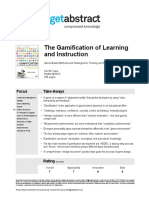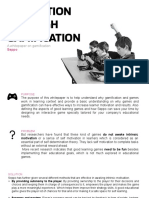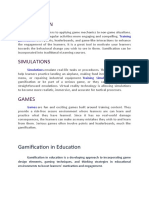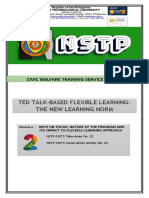0% found this document useful (0 votes)
2K views19 pagesThe Gamification of Learning and Instruction
The Gamification of Learning and Instruction by Karl M. Kapp explores the use of game-based mechanics to enhance learner engagement and motivation in educational contexts. It emphasizes the importance of intrinsic motivation, effective game design, and the application of game elements to create meaningful learning experiences. The book is supported by research evidence demonstrating the effectiveness of gamification in improving learning outcomes across various domains.
Uploaded by
jeanmatiasCopyright
© © All Rights Reserved
We take content rights seriously. If you suspect this is your content, claim it here.
Available Formats
Download as PDF, TXT or read online on Scribd
0% found this document useful (0 votes)
2K views19 pagesThe Gamification of Learning and Instruction
The Gamification of Learning and Instruction by Karl M. Kapp explores the use of game-based mechanics to enhance learner engagement and motivation in educational contexts. It emphasizes the importance of intrinsic motivation, effective game design, and the application of game elements to create meaningful learning experiences. The book is supported by research evidence demonstrating the effectiveness of gamification in improving learning outcomes across various domains.
Uploaded by
jeanmatiasCopyright
© © All Rights Reserved
We take content rights seriously. If you suspect this is your content, claim it here.
Available Formats
Download as PDF, TXT or read online on Scribd
/ 19

























































































